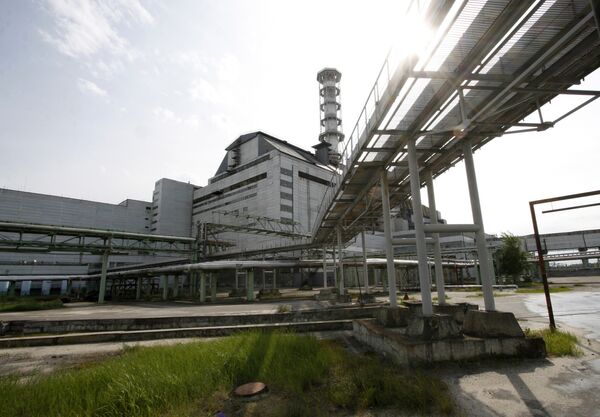KIEV, October 13 (RIA Novosti) - Ukraine's president criticized the government on Tuesday for a slow pace of the construction of a new shelter over the fourth nuclear reactor of the Chernobyl power plant, the site of the world's worst nuclear disaster.
In September 2007, Ukraine signed a contract with France's Novarka to build a protective cover over the reactor, now housed within the crumbling concrete "sarcophagus" in which it was sealed after the accident on April 26, 1986.
The construction has been repeatedly put off due to funding difficulties. The international project led by Novarka, estimated at around $1.2 billion, was to be completed in four or five years.
A deal was also signed in 2007 to build a storage facility for spent nuclear fuel on the site of the plant with U.S. firm Holtec International.
Speaking at a session of Ukraine's National Security Council, President Viktor Yushchenko demanded the assessment of "risks pertaining to the delays" in the construction of the storage facility and the shelter.
Yushchenko said a total of over $900 million had been raised to carry out the projects, but the schedules had not been followed.
"Why is there an empty [construction] site today?" the president said.
The president of the European Bank for Reconstruction and Development, which oversees the project and issued a 135 million euro ($174 million) grant in February, said earlier it was impossible to set any timeframe for the project, which he described as unique. But Thomas Mirow said he hoped significant progress would be achieved by 2012.
The current concrete and steel shell encasing the Chernobyl reactor is badly worn and has undergone numerous reinforcements by a consortium of companies led by Russia's Atomstroyexport.
The new cover will have the form of an arch, 105 meters high and 150 meters long. It will be built onsite then slid over the reactor.
The fourth reactor exploded following a test that resulted in a critical nuclear meltdown. Vast areas, mainly in the then-Soviet republics of Ukraine, Belarus and Russia, were contaminated by the radioactive fallout.
International estimates as to the number of deaths caused by the accident vary widely. The World Health Organization puts the number at 9,000. Several million more people are thought to have been exposed to different degrees of radiation.


